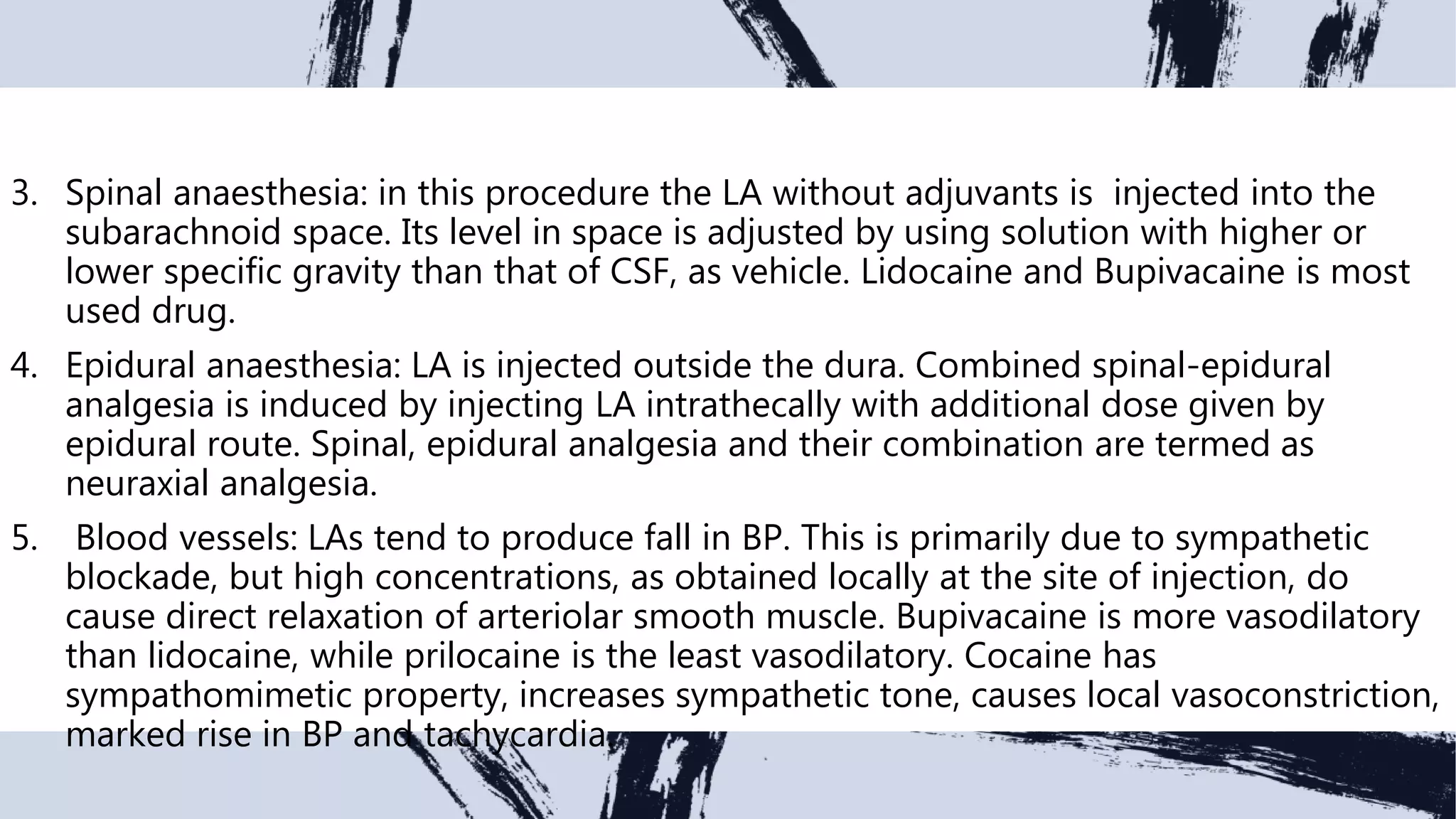This document provides an overview of local anesthesia, including its types, history, classification, mechanism of action, pharmacological actions, uses and techniques, adverse effects, and differences from general anesthesia. It discusses how local anesthetics work by reversibly blocking sodium channels in nerve fibers to inhibit nerve impulse conduction. Common local anesthetics and their properties, uses for surface, infiltration, nerve block, spinal and epidural anesthesia are summarized. Potential adverse effects including CNS, cardiovascular and local tissue toxicity are also outlined.






















